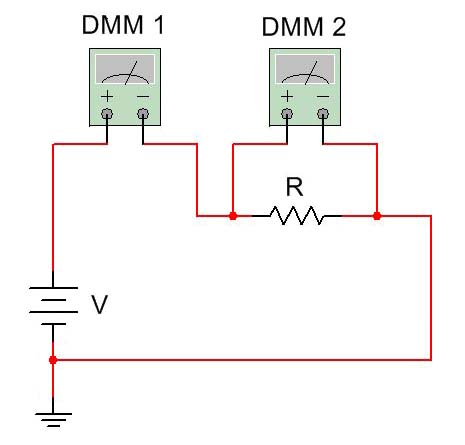Ohm's law
Introduction
Here you can perform simple experiments remotely from home or elsewhere using resistors and instruments located in an instructional laboratory at Blekinge Institute of Technology in Sweden. Ohm's law states that the amount of electric current through a conductor in a circuit is directly proportional to the voltage across it. Ohm expressed his discovery in the form of a simple equation, describing how voltage, current, and resistance relate to each other: V=IR. He published his work in 1827. In the example below you can repeat Ohm's experiment using modern equipment.
Experiment instruction
In this experiment your task is to investigate the relation between voltage and current in a circuit.
Follow the instructions and when you made your experiment setup, press the "Measure" button to carry out the measurement.
Build your circuit
Begin with building your circuit.
Connect the 2.7k resistor to the power supply in series with the digital multimeter (DMM1) used as a ampere meter.
Place the other digital multimeter (DMM2) parallell to (across) the resistor
and set it to measure volts (see figure 1).
Set the power supply to 0.5V, measure and observe the results on the instrument displays.
Vary the voltage from the power supply from 0.5 to 6V and write down the voltage and current
from 8 different meaurements.
Draw a graph of the voltage as a function of the current. Calculate the resistance based on the graph.

Figure 1
Breadboard
Measure
Press this button when you want to make a measurement.Or you can press measure in the lower righthand corner.
Dmm 1
Dmm 2